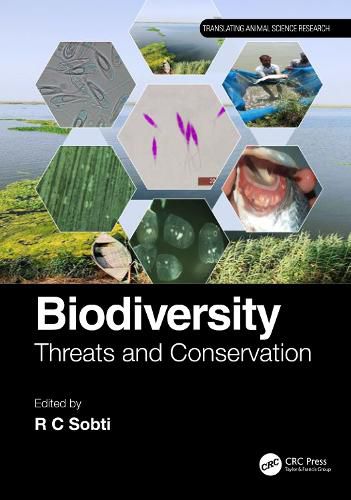Readings Newsletter
Become a Readings Member to make your shopping experience even easier.
Sign in or sign up for free!
You’re not far away from qualifying for FREE standard shipping within Australia
You’ve qualified for FREE standard shipping within Australia
The cart is loading…






The term Biodiversity or Biological diversity describes the variety of living beings on earth encompassing microorganisms, plants, animals and ecosystems. For example, coral reefs, forests, and deserts etc. In fact, it also represents a wealth of biological resources available to us. Biodiversity’s wealth of genetic information can be conserved by storing biological material from endangered species. Cell lines, gametes, and embryos are preserved so that in case the species get extinct or there is a need to increase the population of the species, then cloning and artificial reproductive techniques can be used to revive and reproduce these species. The cloning of animals may be helpful in the direction. The extinct species can be revived from the genetic material contained in dead tissues like skin, bones, etc. Though cloning techniques have been successful for only a few animal species, the future developments in this technology provide hope for resurrecting the extinct ones. The present volume discusses the biodiversity of specific animal groups, such as cnidarians and fish, as well as potential risks to and methods for conserving some of them.
The following important aspects have been addressed:
Importance of biodiversity in maintaining ecosystem balance for sustainability.
Emerging role of biodiversity as source of important materials, pharmaceuticals, food etc. as such or through genetic manipulations to meet the contemporary and futuristic challenges.
Impact of environment degradation on biodiversity and conservation in a changing environment.
Conventional and emerging biotechnological techniques to conserve biodiversity.
The book is intended for academics, scientists, and naturalists working in the fields of biology, biochemistry, biophysics, and biomedical sciences.
$9.00 standard shipping within Australia
FREE standard shipping within Australia for orders over $100.00
Express & International shipping calculated at checkout
The term Biodiversity or Biological diversity describes the variety of living beings on earth encompassing microorganisms, plants, animals and ecosystems. For example, coral reefs, forests, and deserts etc. In fact, it also represents a wealth of biological resources available to us. Biodiversity’s wealth of genetic information can be conserved by storing biological material from endangered species. Cell lines, gametes, and embryos are preserved so that in case the species get extinct or there is a need to increase the population of the species, then cloning and artificial reproductive techniques can be used to revive and reproduce these species. The cloning of animals may be helpful in the direction. The extinct species can be revived from the genetic material contained in dead tissues like skin, bones, etc. Though cloning techniques have been successful for only a few animal species, the future developments in this technology provide hope for resurrecting the extinct ones. The present volume discusses the biodiversity of specific animal groups, such as cnidarians and fish, as well as potential risks to and methods for conserving some of them.
The following important aspects have been addressed:
Importance of biodiversity in maintaining ecosystem balance for sustainability.
Emerging role of biodiversity as source of important materials, pharmaceuticals, food etc. as such or through genetic manipulations to meet the contemporary and futuristic challenges.
Impact of environment degradation on biodiversity and conservation in a changing environment.
Conventional and emerging biotechnological techniques to conserve biodiversity.
The book is intended for academics, scientists, and naturalists working in the fields of biology, biochemistry, biophysics, and biomedical sciences.